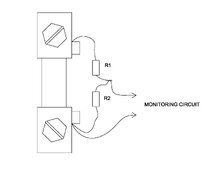TL/DR: Is there a way to make a shunt read 1/3 of the current passing through it?
Background: I have a van with a control system with an integrated shunt and EMS. The system is hard programmed for 200AH of LiFePO4. I've upgraded to 600AH. The manufacturer says they will not support reprogramming of the system to factor in the larger battery bank. When the system consumes 200AH of capacity, the EMS will prevent usage of certain 120VAC outlets, as well as some functions of the 12VDC systems. Is there a practical way of modifying the shunt and/or wiring to make the shunt read 1/3 of the current, effectively tricking the system into thinking it still has a 200AH capacity, when it actually has the 600AH? Thank you in advance!
Background: I have a van with a control system with an integrated shunt and EMS. The system is hard programmed for 200AH of LiFePO4. I've upgraded to 600AH. The manufacturer says they will not support reprogramming of the system to factor in the larger battery bank. When the system consumes 200AH of capacity, the EMS will prevent usage of certain 120VAC outlets, as well as some functions of the 12VDC systems. Is there a practical way of modifying the shunt and/or wiring to make the shunt read 1/3 of the current, effectively tricking the system into thinking it still has a 200AH capacity, when it actually has the 600AH? Thank you in advance!



